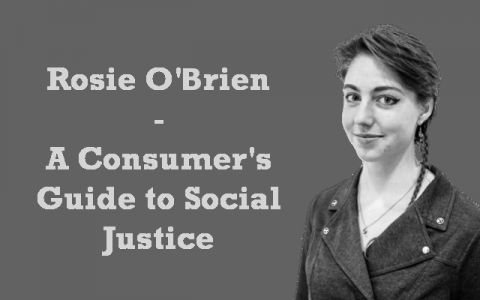About two years ago, I took a pledge. I promised myself that for as long as possible, I would refuse to buy new clothing, no matter how fashionable or cheap. Of course, I excluded items like socks and underwear, but my goal was to never again wash the virgin sizing out of my shirts and pants before putting them on.
Admittedly, I was intimidated by the prospect of only shopping at Goodwill, or worse, searching dumpsters for some semblance of fashion, but I didn’t expect to uncover a global scandal. After two years of exploring alternative clothing sources, I’ve begun to conceptualize the true horrors of this system.
As advocates of social justice, Grinnellians should see the clothing industry for what it truly is: a globalized engine of unsustainable agriculture, human labor, marketing and waste that dominates workers and consumers alike.
The clothing and fashion industry is steadily pushing upon us one of the most poisonous forms of capitalism currently sustained by humanity. In the fashion world, not only are profit margins huge for CEOs, meaning that workers must be paid less than a living wage, but its globalized production system relies upon endless transportation and repackaging, draining precious resources such as water, paper, oil and gas.
Rachel Louise Snyder’s “Fugitive Denim” provides evidence for these claims. She documents the process of making denim jeans as they travel from cotton farms in Azerbaijan to tailoring in Cambodia to marketing in Manhattan. The vast scale of this assembly process reveals that the singular country name on the tag of your pants grossly oversimplifies just how many workers poured their labor into one item of clothing. In fact, your shirt might insist that it was made in China, but the truth is that the thread was produced in Texas, the bolts of cloth were spun in Taiwan, measured and cut by workers in Cambodia and merely sewn in China, eventually ending up at your local Walmart for the low cost of five dollars.
Furthermore, advertisers fabricate and tailor our human emotions even more than the jeans themselves. The fashion business manipulates women in particular into believing that we need five new dresses each season. This means that dress manufacturers depend on us to throw away five “old” dresses after we have drained them of their social capital. Is this wasteful practice actually necessary? To what end has the function of clothing been reduced?
What strikes me is the thought of where these clothes actually end up. How many times will someone wear it before deciding to get a new one? To be honest, my stomach squirms when I imagine the life cycle of a nylon sweater: churned out by a factory laborer (who sewed identical sweaters for 16 hours that day for less than a living wage), then shipped across the world to a shiny box store, into a closet where it may see the light of day five times, then into a landfill or with luck, a Goodwill—all in the space of three months.
Ultimately, the clothing industry encourages consumerism reliant on perpetual waste and want. As an American female, I’m attempting to disobey the conditioning I’ve endured my entire life to buy cute new tops, shiny new shoes, fashionable coats and hats and pants without a second thought to the people who suffered to make it for me. This is a temptation that brainwashes all potential consumers, and it will take a great effort to break the cycle. What we need is a culture of thrift, based on the familiar mantra to “waste not, want not.” Advocates of social justice know that sweatshop workers in Bangladesh need liberation from the chains of modern manufacturing practices, but what we also need to realize is how the contents of our dresser drawers directly influence that process.
The next time you pull out your wallet to buy a shirt, will your money support an endless cycle of exploitation and manipulation by the fashion industry or will it contribute instead to a local market that relies on community goodwill?



















































Natalya Lowther • Sep 29, 2014 at 6:51 pm
Great article! I can’t even remember the last new clothing item I bought other than socks, footwear, and rain gear. It’s been years. I chose this for the same reasons you so eloquently state. Carry on the torch, Rosie!
Someone with mixed feelings • Sep 21, 2014 at 8:38 pm
Unfortunately, these workers often work in sweatshops because the alternative, rural farming, is also miserable and pays less well.
Sure it’s exploitation, but the alternative is worse. Wages will rise over time, as they do in all developing countries. Cheap labor is the only way these countries can compete in the global market place, and eventually develop. Not that there shouldn’t be more global regulations on sweatshops, but it’s a process.
Refusing to buy clothing that was produced in sweatshops is surely a well-meaning gesture. I am just not sure if it results in better outcomes for the sweatshop workers, which is what should matter to one who values social justice.
There’s definitely multiple sides of the story though.